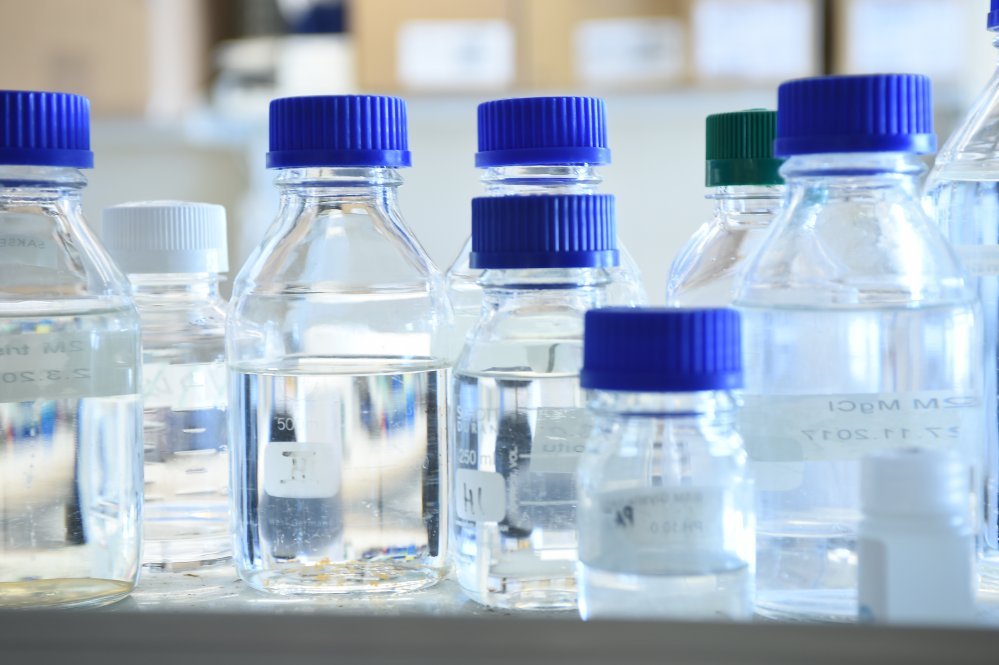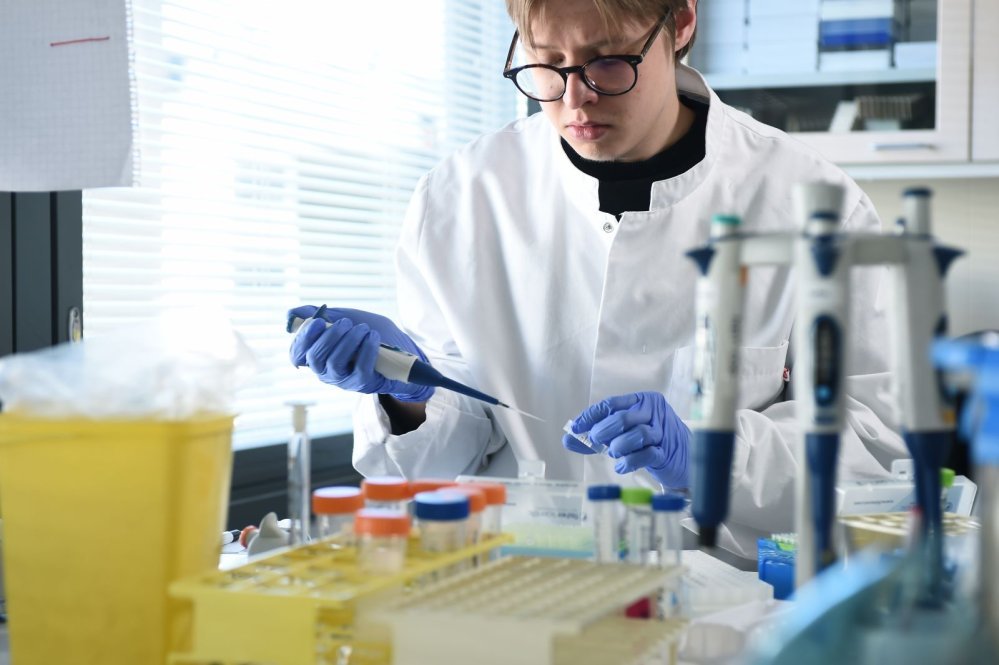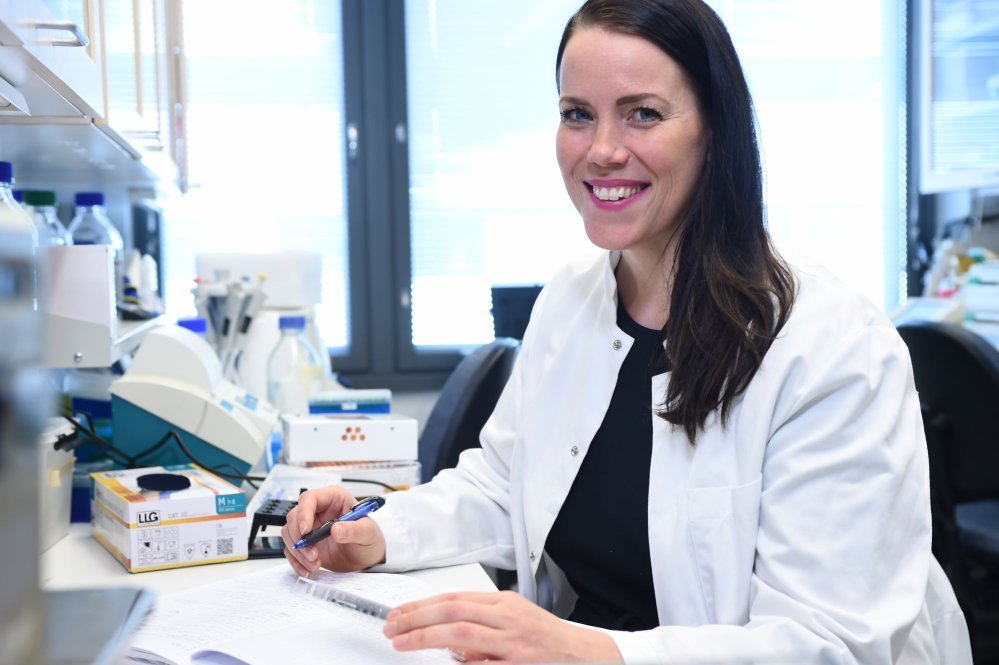Fighting the coronavirus with nasal sprays
According to researchers at the University of Helsinki, coronavirus infections can best be prevented by means of a nasally administered vaccine. In addition to the vaccine, the researchers are also developing a nasal spray to serve as a ‘biological mask’. These are two separate preparations, which are based on different technologies and used differently. The nasal spray may complement the protection provided by vaccines and be particularly suitable for individuals responding poorly to vaccines.Published 8.6.2023
Text: Leena Hulsi / Viestintätoimisto Jokiranta Oy
Photos: Juha Sarkkinen
In December 2019, an epidemic caused by the SARS-CoV-2 virus broke out in Wuhan, China. Four months later, the World Health Organization (WHO) declared a pandemic, or a global health threat. The infectious disease caused by the virus was named COVID-19 (corona, virus, disease, 2019). Its drastic symptoms and fast spread caused anxiety all over the world – among the general population and experts alike. The experts, however, were not surprised by the outbreak of the pandemic. Both in Finland and globally, researchers had already for a long time been warning about the possibility of a severe pandemic.
This was the first time the disease caused by SARS-CoV-2 was found in humans, and both doctors and nurses were challenged by a totally new situation. In spring 2020, hospitals were crowded with COVID-19 patients, even in Europe, thousands of people lost their lives and healthcare personnel got exhausted. Researchers set out for a race against the virus and its spread.
Jumpstarting vaccine development
At the initial phase of the pandemic it was not known how fast the disease would spread and how fatal it would be. Nevertheless, it was clear that an effective vaccine was needed – and quickly.
“Normally, vaccine development is a slow process that takes time, which we did not really have back then. In order to get the spread of the virus and fatalities caused by the disease under control, the researchers were alerted like fire fighters”, describes Kalle Saksela, Professor in Virology at the University of Helsinki.
“In Finland, we have plenty of expertise in the development of viral vector-based vaccines, so we felt it was our duty to get to work. Initially, the spirit was more or less that each country should attempt to save themselves as best they could”, Saksela continues.
The expertise of Academy Professors Seppo Ylä-Herttua and Kari Alitalo, in particular, in the field of gene therapy served as the foundation for the Finnish corona vaccine development, which was undertaken at the University of Helsinki under the leadership of Professor Kalle Saksela. Based on the existing research and with funding granted by various foundations, the development of a nasal spray vaccine advanced rapidly and promising results were soon achieved.

The Finnish vaccine offers many benefits
The most acute urgency, however, alleviated when international pharmaceutical companies succeeded to launch an efficacious vaccine against coronavirus already toward the end of 2020.
“Our work changed from fire fighting to more traditional vaccine development, and a decision was taken to continue developing the nasal spray vaccine within a company established for this purpose. Our goal is to provide a competitive and successful commercial product”, Saksela says.
The nasal spray vaccine developed in Finland is composed of an adenoviral vector to which the gene of the spike protein of the SARS-CoV-2 virus has been transferred. The intention is for the vaccine to program the nasopharyngeal cells to produce this particular protein, which, in turn, will trigger an immune response. The vaccine does not contain the virus itself but it provides protection against the disease by means of virus vector technology.
“Animal studies carried out by our research team have shown that the virus vector components of the nasally administered vaccine do not enter blood circulation but, instead, they produce antigens on the mucous membrane of the nose. Therefore, they are not expected to result in those rare coagulation problems that were, even in Finland, the reason for abandoning intramuscularly injected adenoviral vector vaccines”, Saksela explains.
According to Saksela, the nasal spray vaccine (FINCoVac) offers several major advantages as compared to injected vaccines.
“It appears that the nasally administered vaccine provides a more appropriate immune response than a vaccine that is injected into a muscle. Moreover, it produces antibodies that will protect the mucous membranes, which probably will prevent those vaccinated from spreading the virus.”
The modifiability of the nasal spray vaccine is another significant benefit raised by Saksela. The vaccine can be tailored easily and rapidly, so it will offer effective protection against several different coronavirus variants, if required.
“The same technology enables us to produce vaccines against other viruses as well. By means of this method we can better prepare ourselves for future pandemics. In the long run, the only sustainable solution is the rapid development of new vaccines that are modifiable and protect both against the severe form of disease and infections."

Researcher Petja Salminen's work requires precision and perseverance.
A ‘biological mask’ to complement the vaccine
Along with the nasally administered vaccine, another Finnish innovation is being developed: a nasal spray that neutralises coronavirus in the mucous membranes of the upper airways. A nasal spray vaccine and a nasal spray against coronavirus may sound like one and the same product, but actually they are two totally different preparations and approaches.
“Vaccination means that an individual’s own immune system is harnessed to produce antibodies that will neutralise the virus. The protection provided by a vaccine is formed slowly but can remain effective for a long time", explains Saksela.
The nasal spray, on the other hand, is described by Saksela as a kind of a ‘biological mask’ or a medicine-like product prepared in a bioreactor outside the human body. The preparation is sprayed into the nostrils and it has a passive effect, in other words, it is not intended to modulate the individual’s own immune system.
“The nasal spray provides instant and effective protection since it rapidly inactivates the viruses landing on the mucous membrane in the nose and thus prevents them from spreading. However, it will not replace vaccination because it only provides a short-term protection”, adds Postdoctoral Researcher Anna R. Mäkelä, who is responsible for the nasal spray development project.
The nasal spray could be recommended for use in cases related with a high risk of infection. It offers significant additional protection to, for example, the family members of a person at high risk, who wish to minimise their own exposure, for example, at a large public event.
“The nasally administered spray contains a molecule that is designed to eliminate viruses ending onto the mucous membrane in the nose and thus to prevent people from catching and spreading the coronavirus disease”, Mäkelä describes.
The nasal spray may also protect against coronavirus after exposure. In this case, one should use the spray preferably within a few hours after becoming aware of a potential infection.
“The next day is not necessarily too late to tackle the virus. The virus stays first a couple of days in the upper nasopharyngeal area to multiply itself, and only then starts spreading in the body. The use of a nasal spray at this stage may reduce the viral load and prevent the onset of the severe form of the disease. The additional protection offered by the spray is especially important for high-risk patients and their families”, says Mäkelä.
Mäkelä is pleased about the fact that the molecule developed by her targets an area of the virus that remains unchanged. Thanks to this feature, it can be assumed that the nasal spray will also be effective against SARS viruses causing pandemics in the future.
“Because of the technology we have used, the nasal spray has other advantages as well. It can be manufactured in large quantities cost-effectively, it can be stored at room temperature and it is easier to transport than the currently available coronavirus vaccines. As a result of its long shelf-life, the product can be supplied to, for example, African countries. The production of antibody-based medicines is clearly more expensive and, in terms of their properties, they are also much more fragile."

“The coronavirus pandemic was associated with numerous additional issues apart from the disease itself. By avoiding a massive lockdown of society, the associated problems could be avoided as well”, says Anna R. Mäkelä.
Security of supply is essential
Currently, the preclinical studies required for the marketing authorisation of the nasal spray are in their final straight. The following phase involves clinical testing of the molecule in humans.
“There are preparations of similar type being developed in other countries, but none is quite identical to ours. If we succeed in commercialising the nasal spray, it might become a lucrative export product”, states Mäkelä.
According to Mäkelä, the nasal spray, together with a nasal spray vaccine made in Finland, would provide the entire Finnish society with better possibilities to manage the next pandemic with as little damage as possible.
“The coronavirus pandemic was associated with numerous additional issues apart from the disease itself. By avoiding a massive lockdown of society, the associated problems could be avoided as well”, Mäkelä comments.
Saksela points out that access to an easily modifiable nasal spray vaccine and a broad-spectrum nasal spray to neutralise viruses would considerably improve the national security of supply in Finland in case the worst-case scenarios were to realise.
“The pandemic we've gone through could have been a much bitterer lesson. Should the next pandemic be even more fatal, it is essential that we have national capacity to produce vaccines ourselves. In an emergency situation, we cannot simply rely on others", Saksela emphasises.
It is, undeniably, odd that preparing for pandemics has not been raised as an equally important issue as preparedness for climate change, loss of nature or the possibility of war.
“A pandemic is a global threat whose probability is increased by all of the above-mentioned challenges. We are aware of this and, yet, the significance of preparing for pandemics is poorly understood. This even considering the huge number of human lives possibly lost because of a pandemic”, Mäkelä says.
The situation could be compared to national defence. International collaboration and Article 5 of the NATO treaty are important but, at the end of the day, Finland’s national security relies on our own, strong defence capability and its continued maintenance and development.
Coronavirus, which caused millions of deaths, appears to be beaten but, according to researchers, it is more like winning a game than conquering the virus once and for all.
“We do not know when the next pandemic will break out or what will cause it, but there is no doubt new pandemics will occur. The next pandemic may be caused by a new-generation SARS virus or some other virus. It may also be even more contagious and lethal – this is what we should prepare ourselves to for now”, Saksela concludes.
Our decision-makers should also be aware of this.
